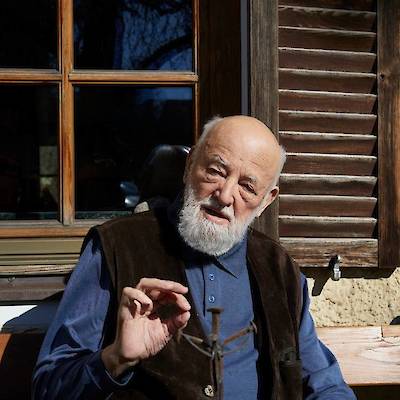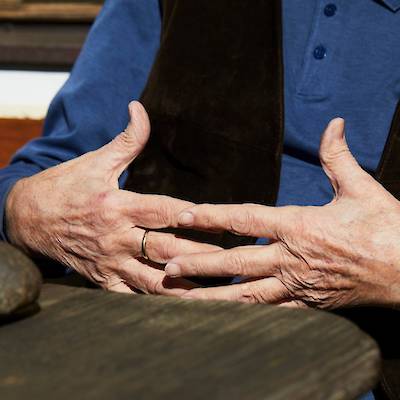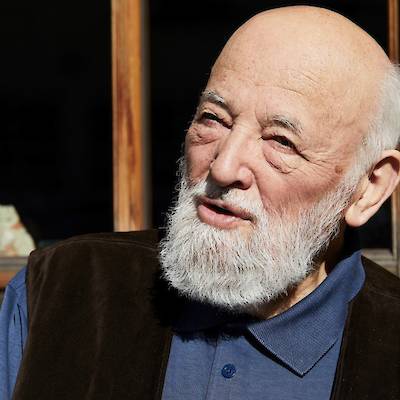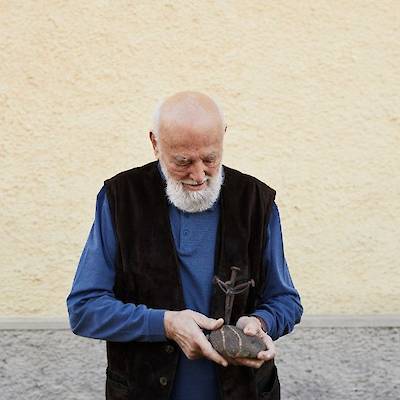An Interview with Sepp Forcher
What did your first encounter with the town of Leogang look like?
Forcher: I came to Leogang in the 1950’s, because was already interested in minerals back then. That’s why I went down to the Danielstollen tunnel to collect some pieces. Collecting minerals there wasn’t explicitly prohibited, but it was also not entirely legal. Mineral collectors couldn’t be stopped by that, though. It was a different time.
Was it then that you met Hermann Mayrhofer from the Mining and Gothic Museum?
Forcher: No, I only met Hermann later, when the tunnel in Leogang was transformed into a show mine. From the start, I could feel his passion for Mining and Gothic art, even though he didn’t put on a big show. And it is that passion that has a contagious effect on many people.
Have you been enthusiastic about the museum right from the start?
Forcher: I was very pleased with what the museum had to offer, and I was especially interested in mining. But I got enthusiastic about the museum once Gothic art became a part of it. Back then, Hermann once called me and said he’d gotten a Gothic altar picturing miners for the chapel in Leogang. Of course, I had to see that and show it in my television show.
So, what connects you and Hermann is the love for gothic art. Where does this love come from for you?
Forcher: I have liked Gothic art ever since I was a child. Being surrounded with all the pieces of the biggest artists certainly leaves a mark on you. One day, I thought I couldn’t keep up with all of the Gothic art that is out there, and I decided to focus on the Late Gothic art in the area of Southern Germany, which is obviously a complete nonsense because Late Gothic Art is scattered all over Europe – from Sicily to Trondheim. In fact, it can be found all over the world.
You yourself are an enthusiastic mineral collector. What keeps you going?
Forcher: I have always collected minerals purely for myself. Now that I’m getting older, I get excited when I see that it wasn’t for nothing, and that there are people who are interested in the pieces and the stories that they carry, even though not all the collectors’ pieces have a story worth passing on. A piece like this always has to be something real, something that people can understand.
Do you happen to have an example for that?
Forcher: A friend once gifted me a stone from the Tagliamento river with nails from a fortress ruine in Carinthia. A smith transformed it into a Jesus‘ cross. From the stone, you can tell the danger of the river, which played a significant role in World War I and, to this day, keeps causing catastrophic floodings. To add to that is that a smith took these old nails – probably from the beams or the drawbridge of the fortress ruins – and created something new from it. That is a story that people can follow and understand.
What is not as easy to understand is the connection between mining and Gothic art in a museum – at least not for people who are not that familiar with these two topics. How do the two subjects fit together?
Forcher: Cultural highpoints often go hand in hand with a certain kind of wealth. In Salzburg, for a long time, this wealth was a result of mining lots of different mineral resources such as gold or salt. A friend of mine once said that Salzburg is rich with poor ores. All over the country, people started drilling holes in mountainous areas to see what they could find. In Leogang, mining was especially successful, which is why lots of art was created in this region in the Gothic Era.
What’s your view on the significance of the Mining and Gothic Museum for Leogang?
Forcher: I think the museum is not only important for the region, but it is exemplary for all of Austria. Of course, you cannot look at it from the perspective of mass tourism, but you have to see it as a monument of culture. Also, Hermann managed to convince those who are likely the most critical visitors of the significance of the Museum: the locals.
So the museum is center of attraction for the whole region. What else is it that makes Leogang so unique?
Forcher: I like all the old restaurants, hotels and inns with their beautiful vaulted cellars and the stories that are hidden there. And the Leogang Mountains, which are so big and impressive on the one hand, but, on the other hand, just far away enough not to present danger and send avalanches into the valley. That’s why Leogang is always worth a visit.
Sepp Forcher is the long-standing host of the ORF show “Klingendes Österreich”, in which he showcases local traditions and folk music. Besides, he spent many years as a mountain-lodge keeper and is regarded as one of the leading experts for Austrian folk culture.




